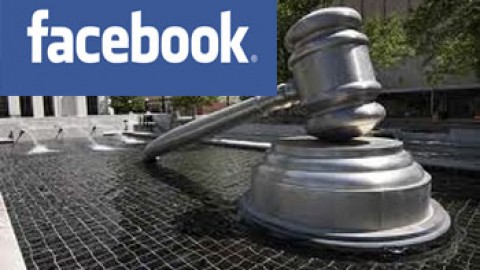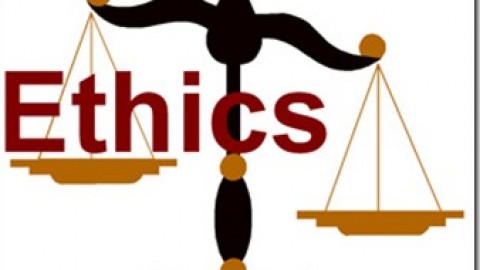by Gael O’Brien
Consciously or unconsciously, employees judge their workplace as ethical – or not – based on what they think their boss does, according to Jim Clifton, chairman and CEO of Gallup. That is why, Clifton says, in companies “whom you name manager is the single most important impactful thing you do with ethics.”
“Ethics, like politics, is local, local, local,” Clifton continues. “If I think my boss treats me ethically and honestly, that is what I think of the company. That is a pretty intense finding in all of Gallup’s work in the last couple of decades.”

I talked recently with Clifton, who has been at the helm of the Gallup organization for 24 years, about ethics, engagement, and the role of managers. Clifton is the author of the new book, The Coming Job Wars.
The search for the holy grail of what drives ethical culture has occupied researchers and consultants, if not, unfortunately, corporate leaders. Gallup research, and recent work done by the Ethics Resource Center, illuminate findings about factors that drive engagement as well as employees’ loss of confidence in bosses’ ethical behavior, an indicator that foreshadows a decline in workplace ethics. Companies ignore these findings at their peril.
A critical factor: the type of people companies hire as managers. Gallup’s research indicates that engagement in the workplace is all about the manager. It starts, Clifton says, with having a good manager who sits down with employees to figure out their strengths and make sure their jobs are using their strengths. The next important step is for the manager to understand the employee’s purpose and mission in life and, with the employee, align that with the mission and purpose of the organization.
If an organization does those things, the employee’s productivity is tripled or quadrupled, Clifton says; there is unlimited potential. But it is very difficult to accomplish, he adds, because there are so few good managers. “Whom you name manager determines not just the values, ethics, honesty, all that, but also profitability, whether or not you get customers.”
In The Coming Job Wars, Clifton references the 12-question survey which Gallup has been using for years that indicates whether employees are engaged, not engaged, or actively disengaged. Companies using the survey provide managers and supervisors with the results of how direct reports and employees in their groups answered the survey. The12 questions include: “I know what is expected of me at work,” “The mission or purpose of my organization makes me feel my job is important,” and “This last year, I have had opportunities at work to learn and grow.”
In his book, Clifton shares Gallup findings that work groups of engaged employees, compared with the actively disengaged, have 37 percent lower absenteeism, 25 percent lower turnover in high-turnover organizations, 49 percent lower turnover in low-turnover organizations, 27 percent less theft, 40 percent fewer safety incidents and 60 percent fewer quality defects.
The cost savings in an engaged culture, whether by Gallup’s or another definition, stem from financial considerations, as well as responsible governance, risk mitigation, productivity and many other factors.
While “Tone at the Top” is important, Clifton emphasizes it is the role of the manager – what some call “Tone in the Middle” – that is especially critical. “The leader can make breathless remarks about integrity, values, mission and purpose,” Clifton says. “I can hear the leader saying that at the state of the company speech; but (as an employee) I am going to judge him or her based on the actions of my manager.”
Clifton’s observations about managers’ role in fostering ethical conduct follow last month’s release of the Ethics Resource Center’s 2011 National Business Ethics Survey (NBES), which examined how leaders at all levels fared driving ethical culture.
While the NBES points out areas where some progress has been made in workplace ethics, it also indicates a decrease in confidence in managers’ and leaders’ ethical behavior and warns of a “looming ethics downturn” in corporate America.
Past NBES survey results indicated the two major drivers of an ethical culture are senior executives and supervisors. However, among the 2011 survey findings:
— Confidence in the ethical behavior of senior leadership dropped six points to 62 percent in the two years between the 2009 and 2011 surveys, matching the historic low reported in the 2000 survey.
— “Far fewer employees believe their direct supervisors act as ethical leaders: one-third of employees (34 percent) say their managers do not display ethical behavior, up from 24 percent in 2009 and the highest percentage ever.”
— In spite of decreasing confidence in the ethical example set by their supervisors, and declining confidence in senior management, by far the two greatest sources in a company most likely to get reports of misconduct are the supervisor (56 percent) and higher management (26 percent).
— Perceived retaliation was 22 percent, 7 percent higher in 2011 over 2009 levels, for people who reported misconduct – generally co-worker about co-worker – the largest increase the ERC has seen.
The NBES report recommends, among other things, that ethical leadership be incorporated as a criterion in performance evaluations for managers. It also suggests that leaders communicate both their personal commitment to ethical conduct as well as how they link business integrity to their business strategy.
These demonstrated weaknesses in “Tone in the Middle” highlight the role of education for managers. But what’s needed is far more than training in skills, new laws, and communication strategies for ethics and compliance professionals, or awareness training for the entire organization.
Leaders at all levels need to recognize that ethical behavior isn’t a presumption that sits on the wall like a diploma, measuring past achievement and implying some ongoing wisdom. Ironically, we can inadvertently be undone by how we see ourselves if immune to the reality that ethical behavior requires ongoing intention, open discussions about potential implications and impact of decisions, and a spirit of continuous learning.
Tone at the top, middle, or bottom is only as authentic as the people voicing the tone, and whether they buy into the sustainability of working with others to drive a culture where ethics really can further business success.






